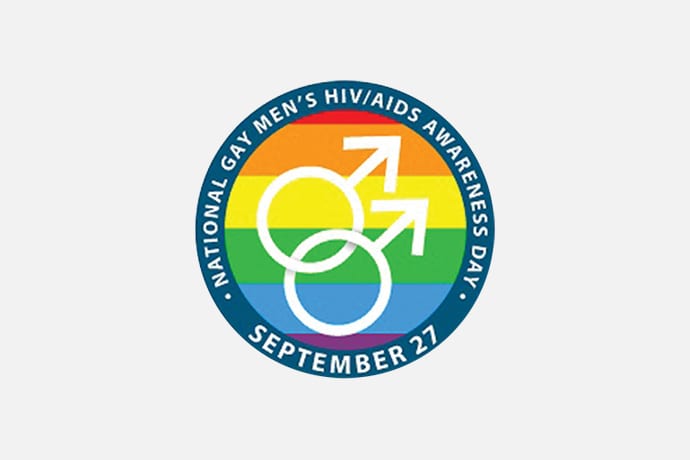 Today is National Gay Men’s HIV/AIDS Awareness Day. Gay, bisexual, and other men who have sex with men (MSM) are the population most affected by HIV in the United States. While gay and bisexual men make up about 2% of the population, they accounted for 70% of the 38,379 new HIV diagnoses in the United States in 2017.
Today is National Gay Men’s HIV/AIDS Awareness Day. Gay, bisexual, and other men who have sex with men (MSM) are the population most affected by HIV in the United States. While gay and bisexual men make up about 2% of the population, they accounted for 70% of the 38,379 new HIV diagnoses in the United States in 2017.
A concerted effort must be made to reduce the disproportionately high rates of HIV diagnoses among gay and bisexual men. This will require funding and supporting tailored services and interventions for different groups of gay and bisexual men, such as Black and Latinx gay and bisexual men who are at higher risk of HIV infection. It will also require leadership from elected officials and other policymakers, working in collaboration with community stakeholders.
Presidential candidates from both major political parties have outlined HIV policy plans. Earlier this year, President Trump announced his Administration’s goal to end the HIV epidemic in the United States by 2030. The Ending the HIV Epidemic (EHE) Initiative sets a goal of reducing new HIV infections in the United States by 75 percent in five years and by 90 percent in 10 years. The strategies to achieve this goal include: (1) diagnosing all people with HIV as early as possible, (2) treating people with HIV rapidly and effectively to reach sustained viral suppression, (3) preventing new HIV transmissions by using proven interventions, including pre-exposure prophylaxis (PrEP) and syringe services programs, and (4) responding quickly to potential HIV outbreaks to get needed prevention and treatment services to people who need them. While the EHE Initiative seems promising to many, the Trump Administration’s policies and rhetoric are not fully consistent with achieving the initiative’s success. Not only has the Trump Administration worked to eliminate or weaken the Affordable Care Act, but it has also expressed and encouraged hostility toward lesbian, gay, bisexual, transgender, and queer (LGBTQ) people and people of color. Ending the HIV epidemic will only be realized if more is done to improve health care access for all people and to support and prioritize the needs of gay and bisexual men and other key populations, including transgender people, Black women, people who inject drugs, and young people.
Several Democratic presidential candidates have made announcements or provided details about their HIV policy priorities. Six of Democratic presidential candidates (Cory Booker, Pete Buttigieg, Kamala Harris, Beto O’Rourke, Bernie Sanders, and Elizabeth Warren) responded to an HIV-focused survey circulated by the ACT Now: End AIDS Coalition. In response to the survey, each Democratic presidential candidate indicated support for the Equality Act (a bill that would protect LGBTQ people from discrimination in housing, the workplace, public accommodations, and other settings) and also supported providing more services for people living with or at-risk of HIV who are incarcerated and more funding for programs like President’s Emergency Plan for AIDS Relief (PEPFAR) and specific HIV prevention efforts like PrEP. The Democratic presidential candidates also differed in specific proposals. Additional information about each candidate’s responses can be found here.
With 2020 being an election year, it is exciting to have HIV issues receiving much-needed attention from the President and Democratic presidential candidates. Federal leadership as well as leadership from state and local policymakers and health departments is needed to make progress on HIV. As effected officials and public health leaders seek to enhance the national response to HIV, it is critical to focus on the prevention and treatment needs of gay and bisexual men. In order to reduce the size and scope of the HIV epidemic in the United States, gay and bisexual men must be front and center.



